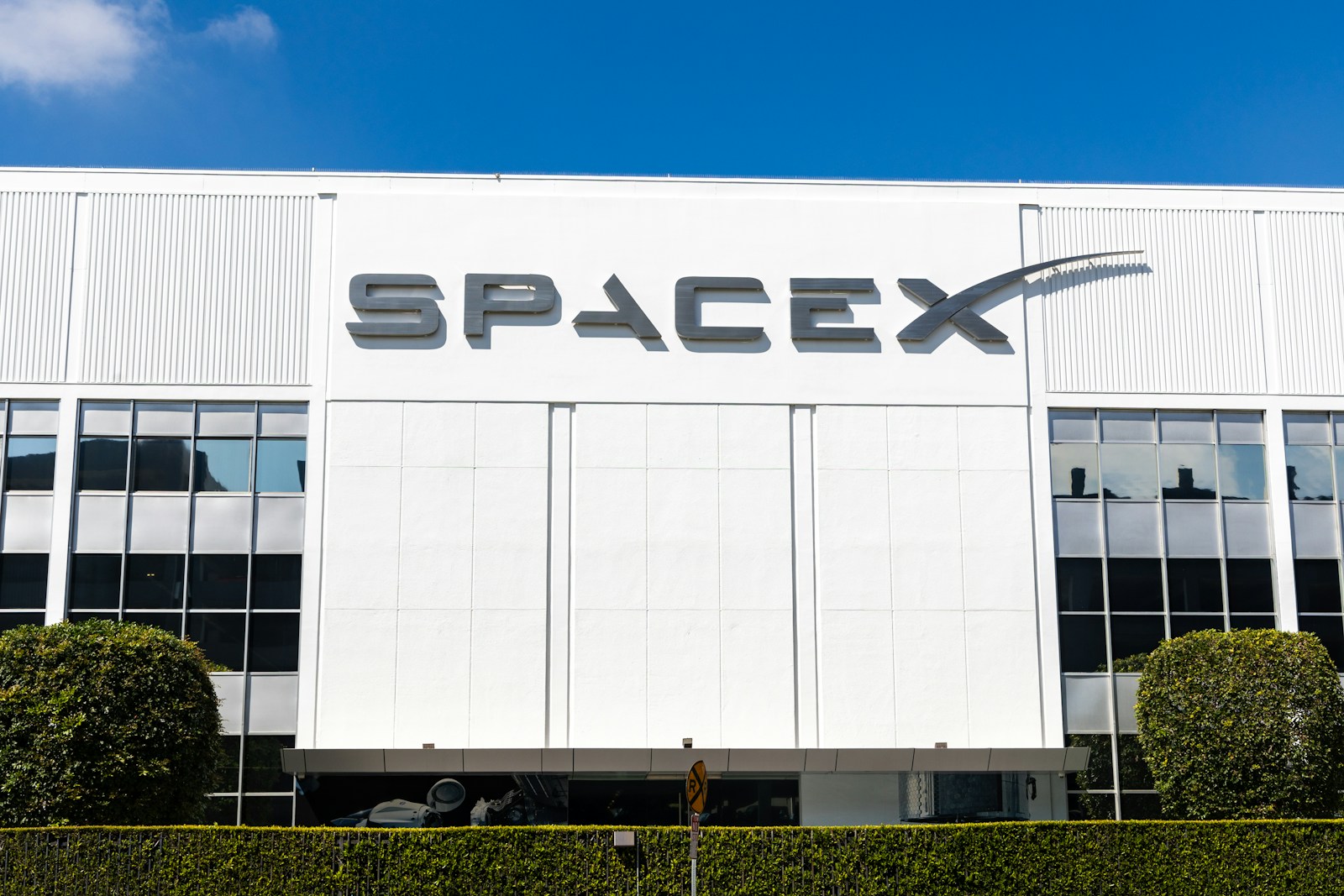SpaceX has redefined the limits of rocket technology, achieving a historic milestone with its Falcon 9 rocket completing its 26th successful mission. On February 15, 2025, the booster lifted off from Cape Canaveral Space Force Station, carrying 21 Starlink satellites into orbit and breaking its own reusability record previously set just weeks earlier.
This achievement underscores SpaceX’s continued dominance in the commercial space industry, showcasing the company’s unparalleled ability to recover, refurbish, and relaunch rockets with remarkable efficiency. The booster’s flawless landing on the droneship A Shortfall of Gravitas in the Atlantic Ocean—just eight minutes after liftoff—further solidifies SpaceX’s prowess in orbital-class rocket recovery, a feat once considered impossible in the early days of space exploration.

Reusability: A Game-Changer for Spaceflight
Rocket reusability is more than a technical flex; it’s a fundamental shift in space economics. Traditionally, rockets were single-use, costing hundreds of millions of dollars per launch. SpaceX’s innovation changed that narrative. The Falcon 9, for instance, costs about $67 million per launch, but reusability slashes incremental launch expenses significantly. Gwynne Shotwell, SpaceX’s President and COO, previously highlighted that reusing boosters reduces launch costs by nearly 50%, making space more accessible to commercial, scientific, and even educational initiatives.
The 26-flight milestone puts SpaceX leagues ahead of competitors. For context, United Launch Alliance (ULA) is only now debuting its Vulcan Centaur rocket, designed with partial reusability. Meanwhile, European and Chinese space agencies are racing to catch up with their own reusable designs.
Starlink’s Growing Dominance in Global Connectivity
The 21 satellites deployed during this record-breaking flight contribute to SpaceX’s ambitious Starlink project, which now boasts nearly 7,000 active satellites. Starlink provides high-speed internet access across the globe, including remote regions previously disconnected from the digital world. From Arctic researchers to rural schoolchildren in developing nations, Starlink has been a lifeline for education, commerce, and emergency services.
As of 2024, Starlink serves over 2.6 million customers in more than 60 countries. The recent launch included advanced “V2 Mini” satellites, which offer improved bandwidth and better signal quality. With these enhancements, Starlink aims to meet the increasing demand from residential users, businesses, and maritime operations.
The Bigger Picture: Mars and Beyond
While breaking reusability records is impressive, SpaceX views these milestones as stepping stones to a grander vision: interplanetary exploration. The lessons learned from Falcon 9’s reusability efforts are directly applied to Starship, the spacecraft designed to carry astronauts to Mars. Each successful booster recovery adds to the company’s data trove, informing better engineering decisions and preparing humanity for its next cosmic leap.
Elon Musk has long emphasized that the future of humanity lies beyond Earth. “Reusable rockets are the key to making life multiplanetary,” Musk once stated. With each Falcon 9 success, SpaceX moves closer to that vision.
Conclusion: The Sky Is No Longer the Limit
The February 15 launch of the 26-flight Falcon 9 isn’t just a technical win; it’s a testament to SpaceX’s relentless innovation and long-term vision. In an industry historically plagued by high costs and long turnaround times, SpaceX has proven that reliability and reusability can coexist.
As Starlink’s constellation continues to grow and the dream of Mars settlement inches closer, SpaceX’s latest achievement stands as a beacon of what’s possible when ambition meets innovation. The sky, it seems, is no longer the limit—it’s just the beginning.
Key Takeaways
- SpaceX’s Falcon 9 booster sets a new record with 26 successful launches and landings
- The mission deployed 21 Starlink satellites, expanding the internet constellation
- Rocket reusability proves vital for reducing space launch costs and increasing mission frequency
The Evolution of Falcon 9 and Starlink Missions
SpaceX continues to push the boundaries of space technology through its innovative rocket reuse program and ambitious satellite internet constellation deployment. The company has transformed space access economics while expanding global internet coverage.
Innovation in Reusable Rocket Technology
SpaceX achieved a historic milestone in February 2025 when a Falcon 9 booster completed its 26th successful flight and landing. This surpassed the previous record of 25 flights set just one month earlier in January 2025.
The Falcon 9’s first stage booster lands precisely on drone ships positioned in the ocean or returns to landing pads on solid ground. Each successful landing saves millions in launch costs.
The rapid refurbishment process between flights has improved significantly since the first booster reuse in 2017. SpaceX engineers now prepare boosters for reflight in just a few weeks.
Boosting Internet Accessibility with Starlink
The Starlink satellite constellation has grown substantially through frequent Falcon 9 launches. Each mission typically carries 21-60 internet satellites to low Earth orbit.
SpaceX deploys these satellites in a carefully planned orbital arrangement to provide high-speed internet to users worldwide. The network now serves millions of customers across multiple continents.
The compact Starlink satellites feature innovative designs:
- Advanced ion propulsion
- Automated collision avoidance systems
- Phased array antennas for high-speed connections
- Low orbital altitude to reduce latency
Achieving Milestones and Setting New Records
SpaceX continues to push the boundaries of rocket reusability with unprecedented achievements in space flight technology. The company’s latest accomplishments demonstrate significant progress in reducing launch costs and improving turnaround times.
Record-Breaking Re-Flight and Turnaround
The Falcon 9 first stage booster achieved its 26th successful flight, surpassing previous records. This milestone represents the highest number of re-flights for any orbital-class rocket in history.
SpaceX launched the mission from Cape Canaveral Space Force Station, carrying Starlink satellites to low Earth orbit. The achievement surpassed the previous record of 23 flights held by three different Falcon 9 boosters.
The rapid turnaround time between launches showcases SpaceX’s efficient refurbishment process. Each successful re-flight validates the durability and reliability of the Falcon 9 design.
Implications for Future Space Exploration
The repeated use of rocket boosters significantly reduces launch costs. SpaceX estimates a 90% cost reduction compared to traditional single-use rockets.
This breakthrough in reusability changes the economics of space access. More frequent launches become possible at lower costs, enabling expanded satellite networks and space infrastructure development.
The success of the Falcon 9 program influences future vehicle designs, including the Starship and Super Heavy booster. These next-generation rockets aim to build upon the reusability achievements of the Falcon 9.
The proven reliability of reused boosters supports both cargo missions and crewed flights. NASA now regularly uses flight-proven boosters for Crew Dragon missions to the International Space Station.
Frequently Asked Questions
Starlink’s satellite program combines advanced rocket reusability with rapid deployment schedules to provide global internet coverage, while managing environmental considerations and technological innovations.
What is the expected lifespan of Starlink satellites once in orbit?
Starlink satellites typically operate for 5-7 years in orbit. SpaceX designs these satellites with a deliberate limited lifespan.
The satellites deorbit automatically at the end of their service life to minimize space debris.
What is the frequency of Starlink satellite launches?
SpaceX launches Starlink missions approximately every 1-2 weeks. The latest launches carry around 21 satellites per mission.
The company’s rapid launch cadence stems from its efficient rocket reuse program, demonstrated by the recent 26th flight of a single booster.
How many Starlink satellites are currently operational?
SpaceX has deployed over 5,000 Starlink satellites into low Earth orbit. The active constellation consists of approximately 4,500 functioning satellites.
Recent launches include satellites with direct-to-cell capabilities, expanding the network’s functionality.
What are the environmental impacts of rocket re-flights for satellite deployment?
Reusing rockets significantly reduces manufacturing waste and resource consumption. Each Falcon 9 booster reuse eliminates the need to build a new first stage.
The rockets use highly refined kerosene (RP-1) and liquid oxygen as propellants, which produce fewer pollutants than solid rocket fuels.
What advancements have been made in rocket reusability for the Starlink program?
SpaceX achieved a record-breaking 26th flight with a single Falcon 9 booster in 2025. This marks significant progress from their initial goal of 10 flights per booster.
The company has reduced turnaround times between launches to just a few days.
How does Starlink ensure signal coverage and internet connectivity globally?
Starlink satellites operate in multiple orbital shells at different altitudes. This layered configuration maximizes coverage across latitudes.
The satellites use laser inter-satellite links to relay signals, reducing the need for ground stations.
Each satellite can adjust its position to optimize coverage and avoid orbital debris.







